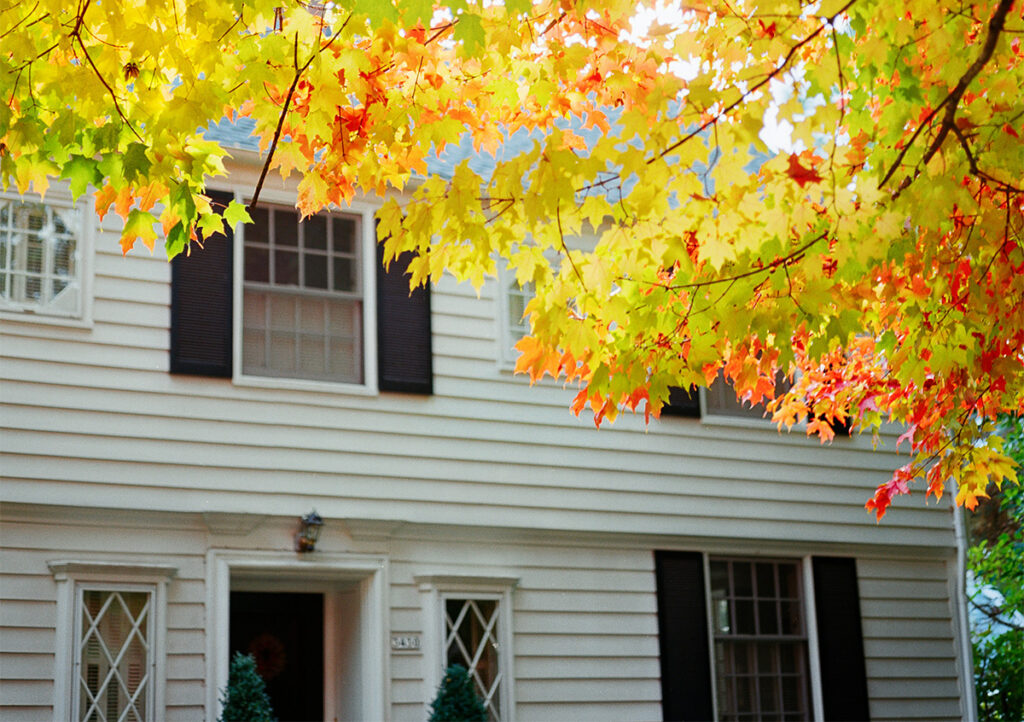It won’t be too long before New Yorkers and all kinds of New Englanders start to go “leaf peeping.” That’s the popular term for the weekend trips that city folk take out to the countryside to see the leaves turn color in the autumn. But with all due respect to our East Coast friends, we have a surprisingly bright (and underrated) turn of color right here in the Conejo Valley. With fall only weeks away, we can look forward to bursts of red and orange as the seasons change.

Actually, the process of color change is pretty interesting in its own right. Tree leaves change color in the fall due to changes in the pigments within the leaves and the tree’s preparation for winter. The primary cause is the breakdown of chlorophyll, which is the green pigment responsible for photosynthesis. There are other pigments present in leaves that are usually masked by the dominant green chlorophyll. As chlorophyll diminishes, these other pigments become more visible. If you’re curious about the process, the pigments include:
- Carotenoids produce yellow and orange colors. They are present in leaves all year but become visible when the green chlorophyll fades.
- Anthocyanins produce red, purple, and blue colors. They are formed in response to bright sunlight and excess plant sugars trapped in the leaves.
- Finally, tannins are the pigments that turn leaves brown.
Good and Bad Years For Color
You may have noticed that the color change is really spectacular in some years, and in others… not so much. The fact is that trees may change color early in the fall or have a dull color change due to several factors:
Drought or Lack of Water: This is a common problem in our area. Trees that are stressed due to insufficient water supply may begin to change colors prematurely. Drought can lead to early leaf drop and muted colors.
Heavy Rain: Though not as common in Southern California, wet years can leave roots weakened due to lack of oxygen. This stress brings about early fall foliage and it can destabilize your trees.
Extreme Temperatures: Here’s another one that Conejo Valley residents may recognize. Unusually high temperatures can also cause stress, leading to early or muted color changes.
Soil Compaction and Poor Soil Health: If the soil around the tree is compacted or lacks essential nutrients, it can impact the tree’s ability to properly produce pigments in its leaves.
Tree Disease or Pests: Certain diseases (like fungal infections) or infestations of insects can weaken a tree, leading to early color change and dull foliage. Stress from these factors can reduce the tree’s energy for vibrant color production.
Environmental Pollutants: Exposure to pollutants such as road salt, chemicals or air pollution can harm tree health, resulting in earlier and less vibrant color change.
Genetic Factors: Some tree species or individual trees may naturally show color earlier or have less intense coloration, regardless of external conditions.
Improper Pruning or Damage: Mechanical damage to the roots, trunk or branches can stress trees and cause leaves to change color sooner than expected. When a tree is stressed, it often stops producing chlorophyll (the green pigment in leaves) earlier than usual, leading to early and muted fall colors.
While there’s not much we can do about heavy rain, we can water our trees more when we have an unusually dry summer and take care to keep our trees healthy in general. As always, if you need help with pruning or trimming, or combatting pests or diseases, give us a call. Autumn is coming fast and it’s a good idea to have your trees in tip-top shape before winter.

